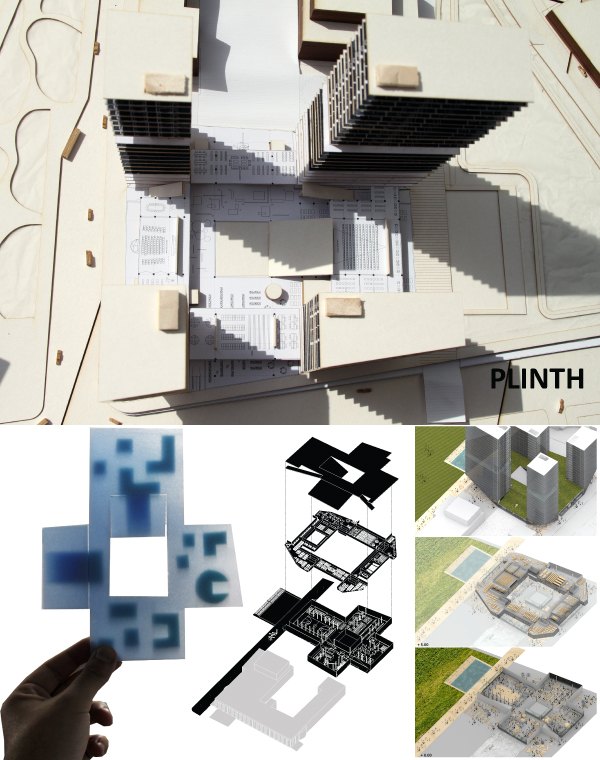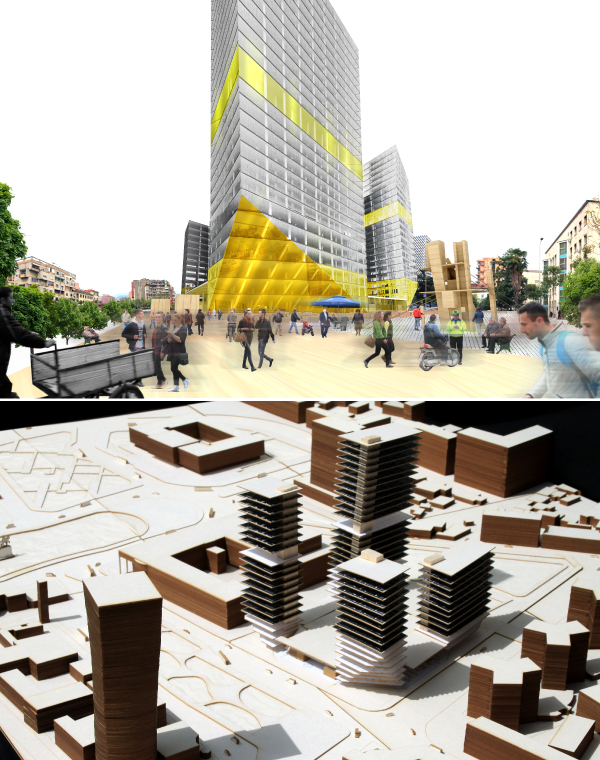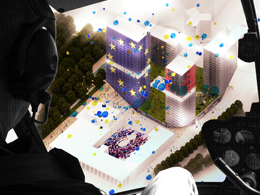STUDENTS PROJECTS
PROJECTS2013
Student: Irgen Salianji
Supervisor: Costis Paniyiris
Department of architecture, University of Thessaly
Presentation date: 1 July 2014
The thesis project researches Tirana's contemporary urban condition and attempts to intensify it, by projecting a dense 'urban forest' and an adjacent complex of mix-use high rise buildings.
The topic of the diploma thesis project is the design of a complex of four tall buildings, which are interconnected on the ground floor. The project is placed on a 20.000 m2 site in the center of Tirana, intervening in the inconvenient green park which exists so far behind the historical building of Tirana's Opera. The aim of the intervention is the intensification of the use of the site and its integration into the urban realm of the city.
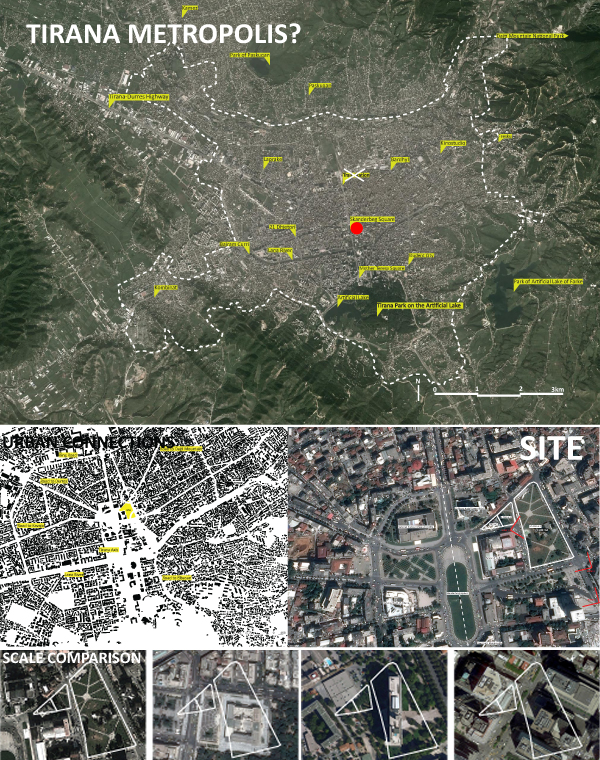
The central idea of the project may be summarized in the following phrase: <<instead of a mediocre park, let's have two intensified urban condensers, an 'urban forest' and a complex of buildings with a mixed program for the city>>. In this way, half of the plot is being constructed in its maximum volume permitted by the city's regulations, and the other half of it receives denser vegetation and trees to become more useful and appealing to urban dwellers.
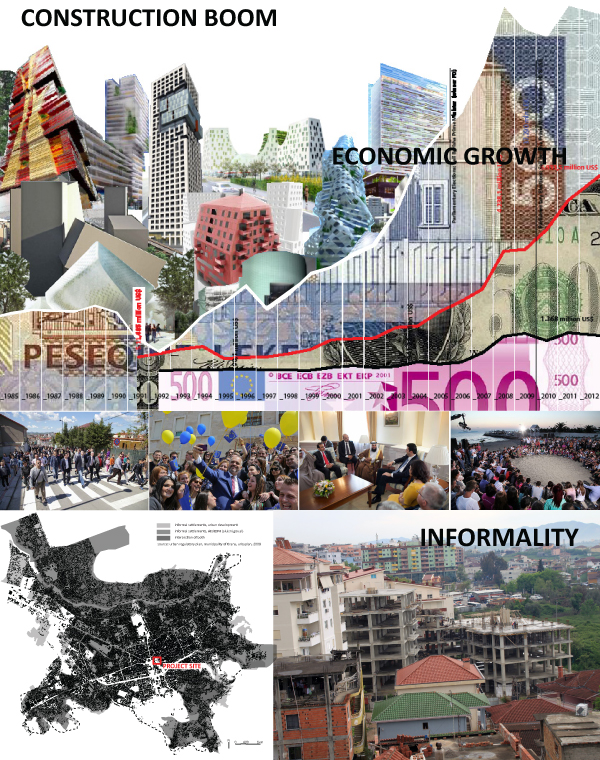
On the ground level, the project reproduces the (typological) micro scale and the program of the city itself on that particular area of the site. In this sense, the base of the buildings (the Plinth) serves as a roof which embraces and defines four fundamental categories of activities: market/trade, contemporary art/education, cultural activities/leisure and sports. Those four different programmatic subjects are interconnected and join the urban realm on their open side to the existing or the newly designed sidewalks. The edges of the buildings on the level of the street are well defined and fully transparent so that the continuity with the urban context is not interrupted.
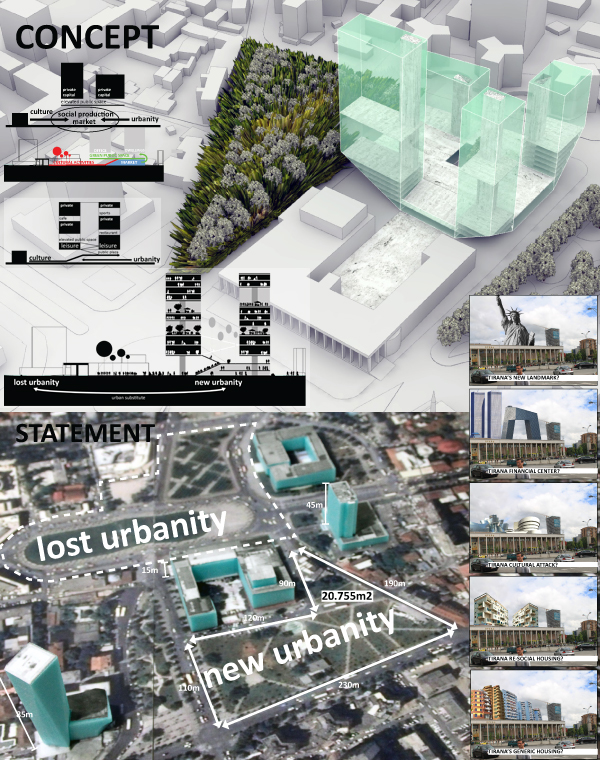
On each of the four corners of the cross-shaped plinth, a building is raised which is of a particular size. The tallest of those four buildings (100 m) aspires to become Tirana's new landmark. Let's call those tall buildings 'Towers' (in Albanian 'Kulla'), once according to the height standards of Tirana, such a tall construction is considered a Tower. Designing these four Towers the project becomes relevant to the recent tradition of Tirana to intensify its center by constructing tall buildings during the last fifteen years. The four towers have also a particular characteristic which makes them special: a big diagonal part of their lower part is missing and part of its vertical program is 'contaminated' with public activities, so they don't serve only for dwelling/apartments and working/offices. The height of the diagonal cuts, as well as the overall heights of the tower, are following the heights of the neighbor buildings, so that the project get integrated into the scale of the context.
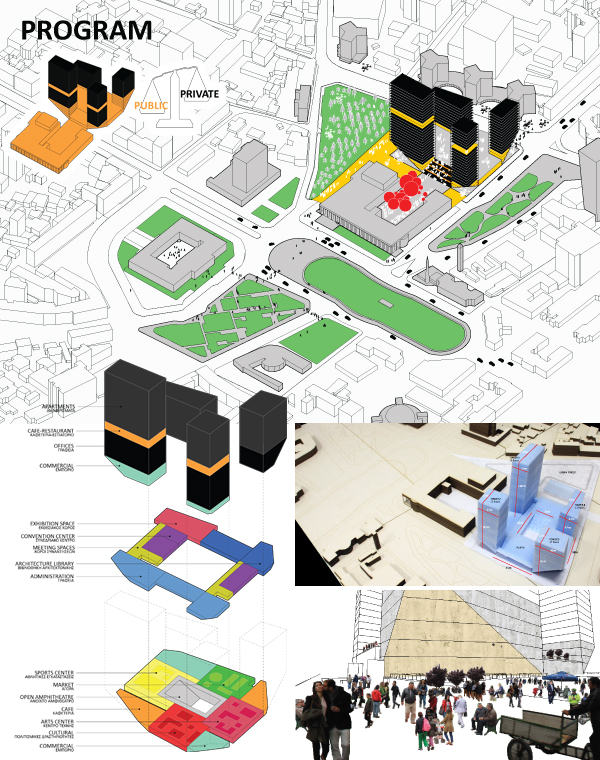
Following such design principles, the buildings which compose the project reveal their impressive presence of scale only above the skyline of the area, once under the skyline they <<reflect urban void to the city's constructed urban solid>>. On the urban voids created by the subtraction of the Towers' lower part, open public spaces are being created on which various public activities can take place, or moreover, on which the interior public program of the Plinth can extend: continuity of interior program (building) towards the exterior spaces(city).
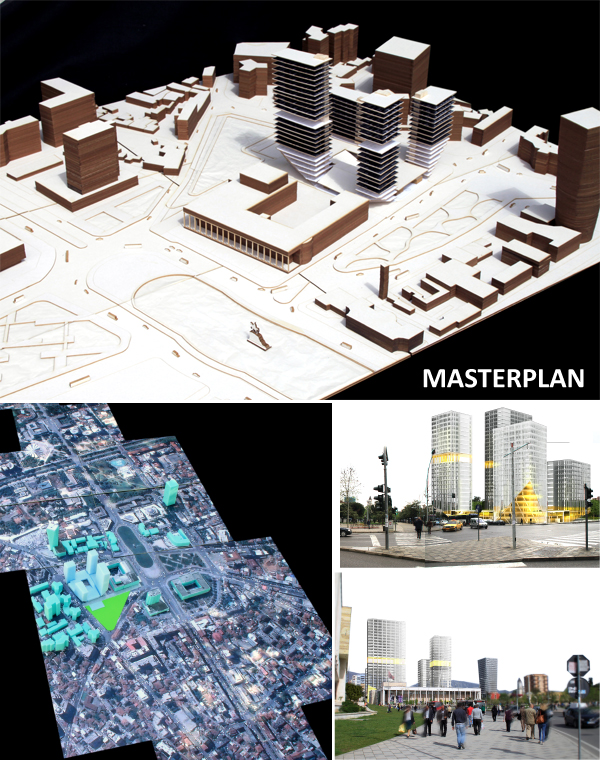
The open public spaces created on the bases of the towers are in 'communication' with additional elements, such as the 'urban forest' which serves as an extension of the sports program in the northern part of the Plinth, or the backyard of the Opera building which serves as a well-framed events space opposite to the cultural program part of the Plinth etc
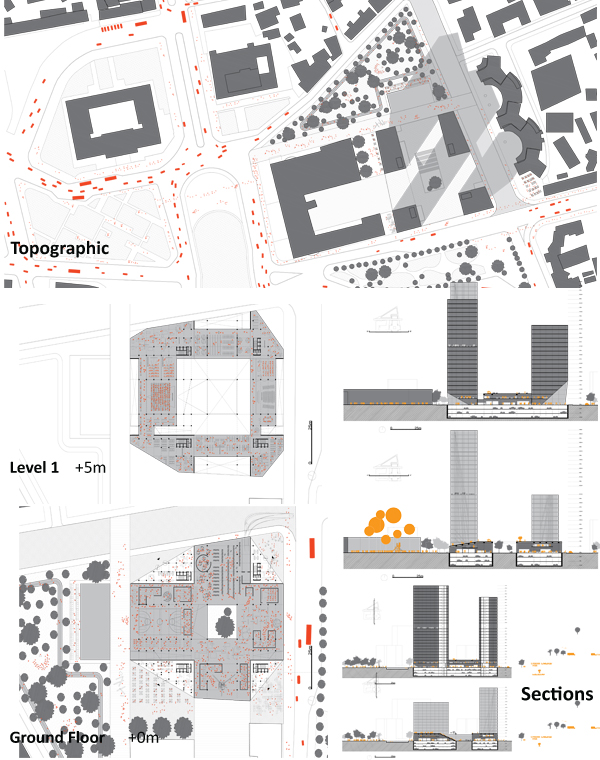
The whole project is also unified by a big linear boulevard which starts from Skenderberg Square and finishes at the Eastern side of the site.
